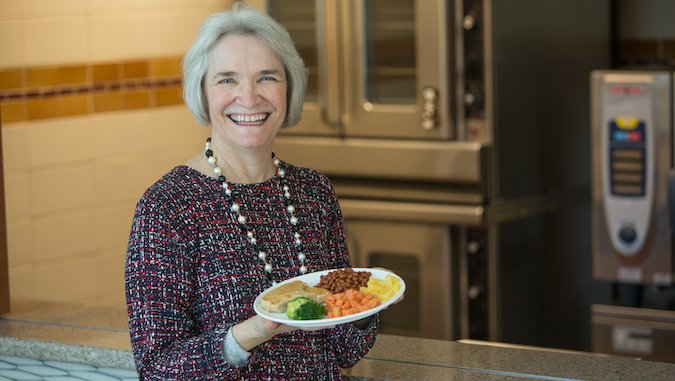
The University of Hawaiʻi Cancer Center has been selected as one of 14 clinics and centers across the country to receive part of $170 million over five years, pending the availability of funds, from the National Institutes of Health (NIH) Common Fund for a new study, Nutrition for Precision Health powered by the All of Us Research Program, to develop algorithms that predict individual responses to food and dietary pattern.
Hawaiʻi received the only designated Dietary Assessment Center, this speaks volumes to the work we are doing in Hawaiʻi
—Carol Boushey
Associate Researcher Carol Boushey will receive $7 million to lead the Dietary Assessment Center (DAC) to study personalized nutritional recommendations addressing Hawaiʻi’s diverse population and other NIH awarded research sites across the U.S.
“We can appreciate the strength of the health programs and research associated with the University of Hawaiʻi, the UH Cancer Center and the UH medical school,” said Boushey, who will serve as the program director and principal investigator for DAC. “Hawaiʻi received the only designated Dietary Assessment Center, this speaks volumes to the work we are doing in Hawaiʻi, which can directly influence the health of people in Hawaiʻi and across the USA.”
The project aims to identify errors in dietary assessment methods that serve as links between diet and chronic disease outcomes such as obesity and cancer. Using mobile and image-based technological tools, DAC will help reach a wider audience through cost-effective, timely channels.
Focus on individual needs
Personalized nutrition, also known as precision nutrition, focuses on an individual’s dietary needs rather than groups of people. Boushey anticipates discovering the influence of dietary intake, while considering the genetics, microbiome—a group of microorganisms that lives in our gut—and other biological, lifestyle and environmental factors of Hawaiʻi’s diverse population.
A key challenge in nutrition is the inability to recognize factors that affect individuals’ responses to a diet that is not tailored to a personalized nutrition regimen. Boushey plans to address this challenge and identify the gap in her future research related to nutrition and health.
The DAC team consists of Marie Kainoa Fialkowski Revilla, associate professor, Department of Human Nutrition, Food and Animal Sciences, UH Mānoa College of Tropical Agriculture and Human Resources; Yurii Shvetsov, Populations in the Pacific Program, UH Cancer Center; Lynne Wilkens, professor and director, Biostatistics Shared Resource Population Sciences in the Pacific Program, UH Cancer Center; Edward Sazonov, Department of Electrical and Computer Engineering, University of Alabama; Megan McCrory, Department of Health Sciences, Boston University; and Edward J. Delp and Fengqing Maggie Zhu, Elmore Family School of Electrical and Computer Engineering, Purdue University.
Boushey’s team consists of nutritionists, epidemiologists, registered dietitians, biostatisticians and engineers specializing in image analysis. Together, the team will deploy ASA24, a web-based tool; the Mobile Food Record, an image-based app; and a passive method, the Automatic Ingestion Monitor v2. These advanced technological tools will combine precision dietary assessment and research translation to better understand eating behaviors, diet-disease relationships and help develop dietary intervention programs.
Joe W. Ramos, interim director of the UH Cancer Center said, “We are very excited about this study that will have a direct impact in Hawaiʻi and around the world. Dr. Boushey and her team have developed innovative new approaches that provide users with easier ways of recording what they eat, simply by taking a picture. This will allow new insight into how diet relates to obesity and cancer that would not be possible otherwise. They are international leaders in the study of nutrition, and we are very proud of their work and congratulate them on this nationally significant project.”
This research is an example of UH Mānoa’s goal of Excellence in Research: Advancing the Research and Creative Work Enterprise (PDF), one of four goals identified in the 2015–25 Strategic Plan (PDF), updated in December 2020.

